Manang Nepal
Manang, a hidden gem in the Annapurna mountain range of Nepal, captivates visitors with its breathtaking landscapes, rich cultural heritage, and thrilling adventure opportunities.
Manang, a hidden gem in the Annapurna mountain range of Nepal, captivates visitors with its breathtaking landscapes, rich cultural heritage, and thrilling adventure opportunities.
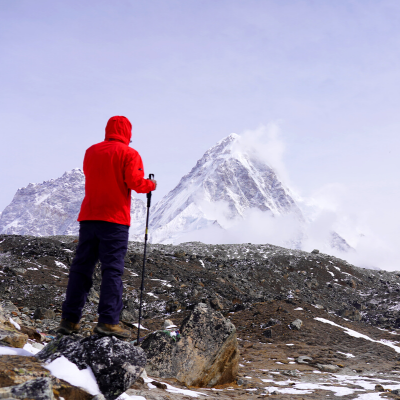
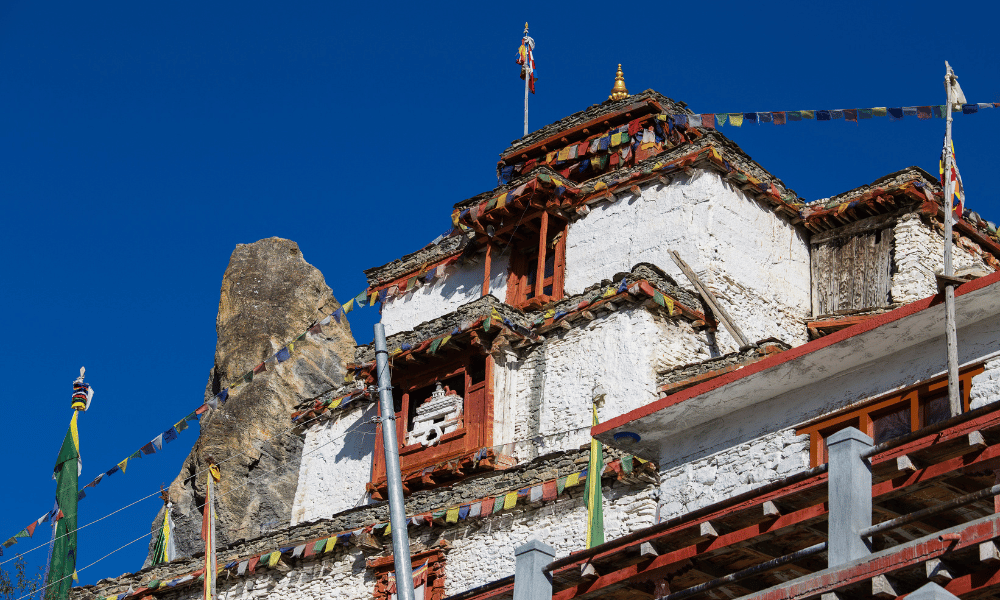
Manang is a remote and stunning region nestled in the heart of the Annapurna mountain range of Nepal. Often referred to as a hidden gem, this pristine destination offers breathtaking landscapes, rich cultural experiences, and a wide array of adventure opportunities for travelers. With its snow-capped peaks, lush forests, and picturesque valleys, Manang provides an enchanting retreat for nature lovers, trekkers, and culture enthusiasts alike. Its isolation from mainstream tourism has allowed it to retain its unique cultural heritage and unspoiled beauty, making Manang a true treasure waiting to be discovered.
Manang is a breathtaking destination that boasts a perfect blend of natural beauty, cultural richness, and adventure opportunities. The region is home to dramatic landscapes, including snow-capped peaks, lush valleys, and pristine rivers. Its unique cultural heritage, preserved through the Manangi people's customs and traditions, offers visitors an authentic glimpse into the local way of life. Additionally, Manang provides ample adventure possibilities, from trekking along scenic trails to adrenaline-pumping activities like mountaineering and paragliding. In essence, Manang offers a well-rounded and unforgettable experience for travelers seeking an off-the-beaten-path adventure in Nepal.
Manang is a stunning region in the Annapurna mountain range of Nepal, characterized by diverse landscapes that include lush forests, alpine meadows, rugged mountains, and glacial lakes. Situated at varying altitudes, the region experiences a wide range of climatic conditions. The lower areas have a subtropical climate with warm temperatures, while higher elevations experience an alpine climate with cooler temperatures and snowfall. The best time to visit Manang is during the pre-monsoon (March to May) and post-monsoon (September to November) seasons, when the weather is more stable with clear skies and moderate temperatures, making it ideal for trekking and other outdoor activities.
Manang is located in the Annapurna region of central Nepal, forming an integral part of the Annapurna Conservation Area. Situated at an altitude ranging from 2,000 to 6,000 meters (6,561 to 19,685 feet), Manang offers a diverse landscape that includes alpine forests, arid highlands, and towering peaks.
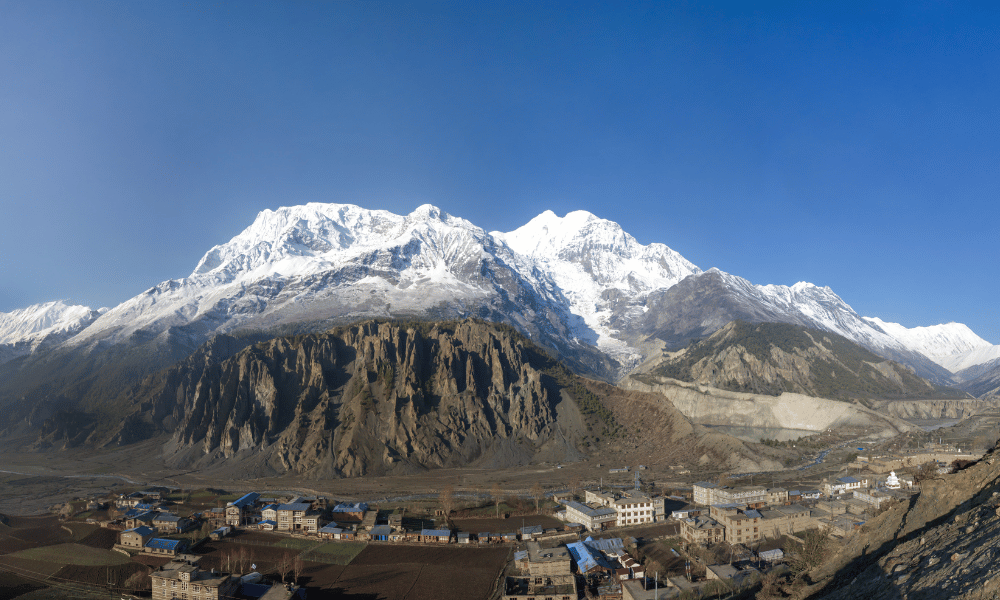
The region is bordered by the Marsyangdi River to the east and the Kali Gandaki River to the west, creating a natural boundary between Manang and its neighboring districts. Manang lies north of the popular trekking hub of Pokhara and is about 108 kilometers (67 miles) away from Kathmandu, the capital city of Nepal.
Manang's location along the famed Annapurna Circuit trek makes it an ideal stop for trekkers en route to the Thorong La Pass. Additionally, its proximity to other popular destinations, such as the picturesque Tilicho Lake, the holy Muktinath temple, and the culturally rich Mustang region, further adds to its appeal as a unique and diverse destination in the heart of Nepal.
The climate in Manang varies significantly due to its diverse topography and wide range of altitudes. Generally, the region experiences four distinct seasons, each offering unique experiences and challenges for travelers.
Spring (March to May): This season is characterized by moderate temperatures, blooming flowers, and relatively clear skies. Spring is an excellent time for trekking, as the trails are less crowded, and the pleasant weather allows for comfortable exploration. During this time, daytime temperatures range from 10°C to 15°C (50°F to 59°F), while nighttime temperatures can drop to around 0°C (32°F).
Summer/Monsoon (June to September): Summer in Manang brings warmer temperatures and the monsoon season. The region experiences heavy rainfall, making trekking trails slippery and prone to landslides. This is not the best time to visit Manang, as visibility is often low, and outdoor activities can be challenging. Daytime temperatures typically range between 15°C and 20°C (59°F to 68°F).
Autumn (October to November): Autumn is the most popular time to visit Manang, as the weather is stable, and the skies are clear, offering stunning views of the surrounding mountains. The monsoon rains have cleared the air, making it an ideal time for photography enthusiasts. Daytime temperatures during this season range from 10°C to 15°C (50°F to 59°F), while nighttime temperatures can drop to around -5°C (23°F).
Winter (December to February): Winter in Manang is characterized by cold temperatures, snowfall, and harsh weather conditions. The higher altitude areas become difficult to access due to heavy snowfall, and some trails may be closed. This is not the best time for trekking, but it can be an opportunity for those seeking a more challenging and quieter experience. Daytime temperatures can hover around 0°C (32°F) or below, and nighttime temperatures can plummet to -15°C (5°F) or lower.
In summary, the best time to visit Manang is during the Spring (March to May) and Autumn (October to November) seasons when the weather is more stable, and the visibility is optimal for enjoying the region's natural beauty and outdoor activities.
Manang's diverse topography and wide range of altitudes create a unique environment that supports a rich variety of flora and fauna. The region is home to numerous plant and animal species, making it a fascinating destination for nature lovers and wildlife enthusiasts.
Flora:
The lower elevations of Manang feature lush forests dominated by rhododendron, oak, and pine trees, providing a vibrant display of colors, particularly during the spring when the rhododendrons are in full bloom. As you move higher in altitude, the vegetation changes to alpine meadows and scrublands, with various wildflowers and medicinal herbs growing in the region. Some rare plant species, such as the Himalayan blue poppy and snow lotus, can also be found in Manang.
Fauna:
Manang is home to a diverse range of wildlife, including several endangered and elusive species. The Annapurna Conservation Area, which encompasses the Manang region, provides a protected habitat for animals such as snow leopards, Himalayan tahr, blue sheep, and musk deer. Other mammals found in the region include the red panda, grey wolf, and various species of marmots and pika.
Bird enthusiasts will also appreciate Manang's rich avifauna, with more than 400 bird species recorded in the Annapurna Conservation Area. Some notable bird species found in the region include the Himalayan monal, lammergeier (bearded vulture), golden eagle, and white-throated tit.
In addition to these species, various reptiles, amphibians, and butterflies can be spotted throughout the region, further adding to Manang's diverse and thriving ecosystem. Visitors to Manang can immerse themselves in this rich natural environment, providing a unique opportunity to observe and appreciate the region's flora and fauna up close.
Get in touch with our experts right away and finalize an experience!
About UsThe Manang region is home to the Manangi people, a distinct ethnic group known for their unique culture, language, and traditions. Deeply rooted in their ancient heritage, the Manangi people have preserved their customs and way of life amid the stunning landscapes of the Annapurna range. Their culture is characterized by vibrant festivals, such as Tiji and Yartung, that celebrate local folklore, history, and spirituality. Visitors to Manang have the opportunity to immerse themselves in this rich cultural tapestry by engaging with local communities, exploring traditional villages, and sampling authentic Manangi cuisine, making for a truly unforgettable experience.
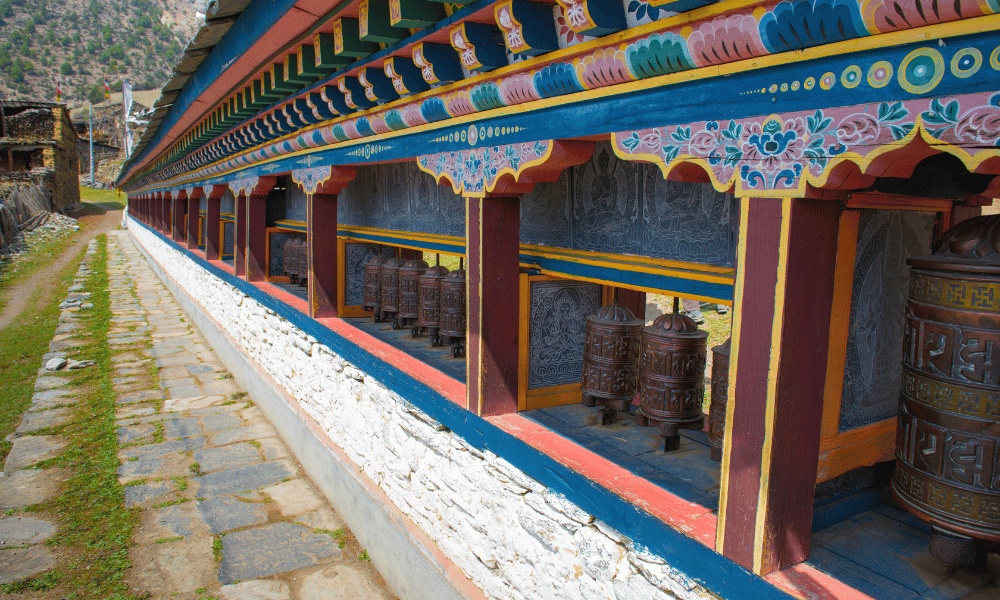
The Manangi people are the primary inhabitants of the Manang region, known for their unique culture, language, and traditions that have been preserved over centuries. Manangis are primarily of Tibetan origin, and their close cultural and historical ties with Tibet are evident in various aspects of their lifestyle.
Language:
The Manangi people speak their own dialect, known as Manangba, which belongs to the Sino-Tibetan language family. While the younger generation is often fluent in Nepali and sometimes English, the older population primarily communicates in their native language, making it an essential aspect of their cultural identity.
Traditions and Customs:
The Manangi people follow a combination of Tibetan Buddhism and the ancient Bon religion. Their spiritual beliefs are deeply rooted in their everyday lives, which is evident in the numerous monasteries, chortens (stupas), and prayer flags scattered throughout the region. Manangis practice polyandry, a rare form of marriage where a woman can have multiple husbands, typically brothers. This custom, although not as prevalent as it once was, is thought to have originated as a means to control population growth and preserve family landholdings.
Manangi people are known for their exceptional skills in trade and craftsmanship. Historically, they were involved in the salt trade between Tibet and Nepal, which allowed them to amass wealth and establish vital trade connections. Traditional crafts, such as weaving, woodcarving, and metalwork, continue to play an essential role in their culture.
Dress and Cuisine:
Manangi people wear traditional attire, with women often donning a colorful chuba (long dress) with an apron, while men wear loose trousers and a long-sleeved shirt, both made from locally-sourced wool. The Manangi cuisine primarily consists of barley, buckwheat, potatoes, and dairy products, with dishes like tsampa (roasted barley flour), thukpa (noodle soup), and momos (dumplings) being popular staples.
Visitors to the Manang region have the unique opportunity to experience the vibrant culture and traditions of the Manangi people, providing an authentic and enriching insight into their way of life.
Manang's rich cultural heritage is evident in the various festivals and celebrations held throughout the year. These events not only hold religious and cultural significance for the local community but also provide visitors with an authentic and immersive experience. Some major festivals celebrated in Manang include:
Tiji Festival:
Tiji is an important annual festival celebrated in the Upper Mustang region, which neighbors Manang. However, the Manangi people, sharing a close cultural connection with the people of Mustang, also celebrate this vibrant event. The festival is usually held in May and lasts for three days. Tiji commemorates the victory of Dorje Jono, a Buddhist deity, over a demon that caused havoc in the region. The festival features elaborate masked dances, traditional music, and rituals performed by the monks. Tiji provides an excellent opportunity to witness the region's unique culture and spiritual beliefs.
Yartung Festival:
Yartung is another major festival celebrated in Manang and the surrounding regions, typically taking place in August. This event marks the end of the harvest season and is a time for the local community to rejoice and give thanks for a successful harvest. Yartung is known for its lively atmosphere, with horse racing, archery competitions, traditional dancing, and feasting. The festival showcases the region's cultural heritage and offers visitors a chance to join the local community in their celebrations.
Lhosar:
Lhosar is the Tibetan New Year and is widely celebrated by the Manangi people, usually falling in late January or February. The festival is marked by various rituals, including the cleaning and decorating of homes, lighting butter lamps, and offering prayers at local monasteries. Lhosar celebrations often include traditional music, dance performances, and feasting on delicious local cuisine.
Buddha Jayanti:
Buddha Jayanti, also known as Buddha Purnima, is the celebration of the birth, enlightenment, and passing away of Gautama Buddha. As the Manangi people predominantly follow Tibetan Buddhism, this festival holds great significance for the local community. Buddha Jayanti is usually celebrated in May and includes prayer ceremonies, meditation, and processions in and around the monasteries.
These festivals and celebrations offer a unique glimpse into the rich cultural heritage of Manang and provide visitors with an unforgettable experience that goes beyond the region's natural beauty.
The traditional cuisine of Manang reflects the region's Tibetan influence and the local agricultural practices, focusing on hearty and warming dishes that provide sustenance in the high-altitude environment. When visiting Manang, be sure to sample the following local delicacies and must-try dishes:
Tsampa (Roasted Barley Flour):
Tsampa is a staple food in Manang, made from roasted barley flour. It is versatile and can be consumed in various forms, such as a porridge mixed with butter tea or a dough-like consistency by adding water. Tsampa is rich in fiber and provides energy, making it an essential source of nutrition for the local people.
Thukpa (Noodle Soup):
Thukpa is a warming and flavorful noodle soup that is popular in Manang and other regions with Tibetan influence. It consists of wheat or rice noodles served in a rich broth with vegetables and meat, such as chicken or yak. Thukpa is perfect for warming up after a day of trekking in the chilly mountain air.
Momos (Dumplings):
Momos are a delicious and popular dish in Manang, as well as throughout Nepal. These steamed or fried dumplings are filled with minced meat (such as yak or chicken), vegetables, or even cheese. They are usually served with a spicy dipping sauce, called achar, which adds an extra burst of flavor.
Dhindo:
Dhindo is a traditional Nepali dish made from millet, buckwheat, or corn flour. The flour is cooked with water and stirred continuously to achieve a thick, dough-like consistency. Dhindo is typically served with vegetable or meat curries and pickles, providing a filling and nutritious meal.
Yak Cheese:
Yak cheese is a unique and tasty product that you should try when visiting Manang. It is made from the milk of yaks that graze in the high-altitude pastures of the region. Yak cheese is known for its rich flavor and high nutritional value, making it a popular choice for both locals and visitors.
Butter Tea:
Butter tea, also known as po cha, is a traditional beverage in Manang and other high-altitude regions of Nepal. Made from strong black tea, yak butter, and salt, this warming and calorie-rich drink is often consumed to cope with the cold weather and to provide energy.
Sampling the traditional cuisine of Manang is an essential part of the overall experience, offering not only unique flavors but also a glimpse into the region's cultural and agricultural practices.
The Manang region in Nepal offers a plethora of adventure opportunities for outdoor enthusiasts and thrill-seekers. Its breathtaking landscapes provide the perfect setting for trekking, with popular routes like the Annapurna Circuit and Tilicho Lake Trek showcasing the region's diverse natural beauty. Mountaineering options, such as climbing Pisang Peak and Chulu East, challenge climbers with their rugged terrain and high altitudes. For adrenaline junkies, Manang also offers exciting activities like mountain biking and paragliding, allowing visitors to experience the region's stunning scenery from unique perspectives. Overall, Manang is an adventurer's paradise, catering to a wide range of interests and skill levels.
Manang is renowned for its trekking opportunities, attracting adventure enthusiasts from around the world. The region's breathtaking landscapes, high-altitude trails, and diverse ecosystems make for unforgettable trekking experiences. Two popular trekking routes in the Manang region include the Annapurna Circuit and the Tilicho Lake Trek:
Annapurna Circuit:
The Annapurna Circuit is one of the most famous and diverse trekking routes in Nepal, offering a unique combination of natural beauty, cultural experiences, and challenging trails. The circuit takes approximately 12-21 days to complete, covering a distance of around 160-230 kilometers (100-145 miles) depending on the chosen route.
The trek begins in Besisahar, passing through the Marsyangdi River Valley and the lush forests of the lower Annapurna region. As trekkers make their way to the Manang region, they will witness the dramatic transformation of the landscape, from dense forests to arid highlands. The circuit includes the picturesque villages of Pisang, Manang, and Chame, where trekkers can experience the unique culture and traditions of the local Manangi people.
The highlight of the Annapurna Circuit Trek is crossing the Thorong La Pass, which sits at an altitude of 5,416 meters (17,769 feet). This challenging pass offers stunning panoramic views of the surrounding snow-capped peaks, including Annapurna, Dhaulagiri, and Manaslu. After crossing the pass, the trail descends into the Kali Gandaki Valley, leading trekkers to the holy temple of Muktinath and eventually to Jomsom, where the trek can be concluded.
Tilicho Lake Trek:
The Tilicho Lake Trek is an off-the-beaten-path journey that takes adventurers to one of the highest lakes in the world, situated at an altitude of 4,919 meters (16,138 feet). This trek can be done independently or as a side trip while doing the Annapurna Circuit. The trek to Tilicho Lake usually takes around 3-4 days round trip from the village of Manang.
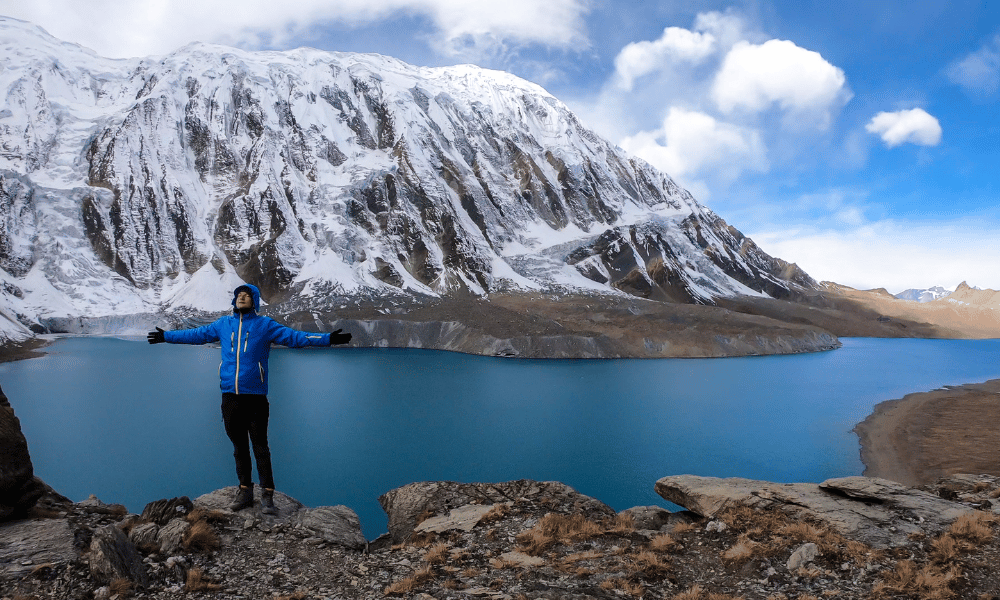
Starting from Manang, trekkers follow the route towards Khangsar village before heading towards Tilicho Base Camp. The trail passes through rugged landscapes, with the majestic Annapurna and Gangapurna peaks towering in the background. The final ascent to Tilicho Lake involves a challenging but rewarding hike, unveiling the turquoise glacial lake surrounded by snow-capped mountains. This awe-inspiring sight is a highlight for many trekkers, making the journey to Tilicho Lake an unforgettable experience.
Both the Annapurna Circuit and the Tilicho Lake Trek offer unique and breathtaking experiences for adventure-seekers, showcasing the stunning natural beauty and rich cultural heritage of the Manang region.
Manang's location within the Annapurna mountain range offers exceptional mountaineering opportunities for adventure enthusiasts. With several challenging peaks in the region, climbers can test their skills and stamina while enjoying spectacular panoramic views. Two popular mountaineering options in the Manang region are Pisang Peak and Chulu East:
Pisang Peak:
Pisang Peak, standing at an altitude of 6,091 meters (19,983 feet), is a popular climbing destination in the Manang region. The peak is known for its moderate difficulty level, making it suitable for both experienced and novice climbers with appropriate preparation and guidance. Pisang Peak offers a great opportunity for those seeking to venture into the realm of high-altitude mountaineering.
The climbing expedition typically begins from the village of Pisang, which is also a stop along the Annapurna Circuit trek. The route to Pisang Peak's summit involves glacier crossings, steep climbs, and sections of technical rock climbing. Upon reaching the summit, climbers are rewarded with mesmerizing views of the Annapurna range, Manaslu, and Gangapurna.
Chulu East:
Chulu East, situated at an altitude of 6,584 meters (21,601 feet), is another excellent mountaineering option in the Manang region. The peak is considered more challenging than Pisang Peak, requiring climbers to have prior high-altitude climbing experience and technical skills. Chulu East offers an exhilarating mountaineering experience and is perfect for climbers seeking to push their limits.
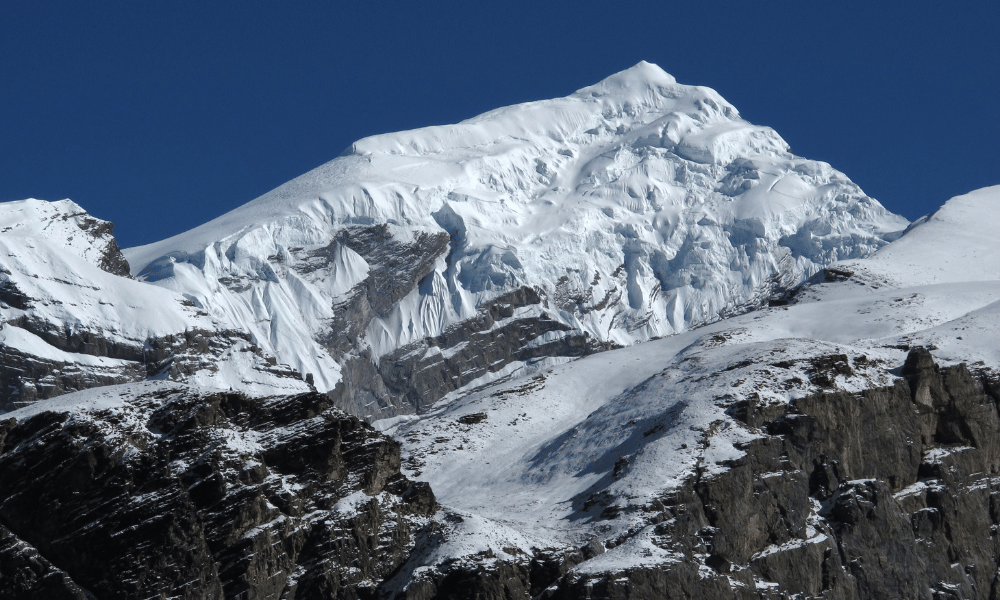
The climb to Chulu East usually starts from the village of Manang, with the route following the Annapurna Circuit trek until the village of Ngawal. From there, climbers make their way to Chulu East Base Camp, where they will prepare for the ascent. The route to the summit involves navigating crevasses, steep snow slopes, and sections of technical rock and ice climbing. Once at the summit, climbers can enjoy breathtaking views of the Annapurna range, Dhaulagiri, and Manaslu.
Both Pisang Peak and Chulu East provide unique mountaineering experiences in the heart of the Manang region, allowing climbers to test their skills and endurance against the majestic backdrop of the Himalayas.
Manang not only offers trekking and mountaineering opportunities but also caters to adventure enthusiasts looking for adrenaline-pumping activities. Two exciting options in the region are mountain biking and paragliding:
Mountain Biking:
Mountain biking in the Manang region offers a thrilling and unique way to explore the rugged landscapes, traditional villages, and diverse ecosystems. Biking trails in the region cater to various skill levels, from leisurely rides through lower-altitude forests to challenging high-altitude singletracks.
One popular mountain biking route is the lower section of the Annapurna Circuit, starting from Besisahar and passing through the Marsyangdi River Valley, with stops in charming villages such as Chame, Pisang, and Manang. This route features diverse terrain, including dirt roads, rocky paths, and river crossings, providing an exhilarating experience for riders. The mountain biking adventure can be customized to suit individual preferences and timeframes.
Paragliding:
Paragliding in the Manang region allows adventure-seekers to experience the breathtaking Himalayan landscapes from a unique perspective. Soaring high above the snow-capped peaks and deep river valleys, paragliders can enjoy panoramic views of the Annapurna range, Manaslu, and Dhaulagiri.
While paragliding options in Manang are still limited and less developed compared to the more popular paragliding hub of Pokhara, enthusiasts may find tandem flights or paragliding courses with experienced pilots in the region. Keep in mind that paragliding in Manang can be more challenging due to the high-altitude conditions, and it's essential to fly with experienced pilots who are familiar with the local weather patterns and terrain.
Mountain biking and paragliding in the Manang region provide thrilling and unforgettable experiences for adventure enthusiasts, showcasing the area's stunning natural beauty and allowing visitors to challenge themselves in the heart of the Himalayas.
Manang boasts an array of must-see attractions and charming accommodations, offering visitors an unforgettable experience amidst its stunning landscapes. Key attractions include the serene Gangapurna Lake, the historic Milarepa Cave, and the spiritual Bhraka Gompa. Exploring local villages, such as Pisang, Ngawal, and Manang village, provides insight into the region's unique culture and traditions. Accommodations in Manang range from basic teahouses to luxury lodges, with options catering to different budgets and preferences. Staying in locally-owned establishments allows visitors to experience traditional Nepalese hospitality while supporting the community's economy.
Manang is home to several must-see attractions that showcase the region's natural beauty, rich history, and unique cultural heritage. Some of the major attractions in the area include:
Gangapurna Lake:
Gangapurna Lake is a stunning glacial lake located near the village of Manang. The turquoise waters of the lake are surrounded by the towering snow-capped peaks of the Annapurna range, creating a mesmerizing and picturesque landscape. A short hike from the village will take you to a viewpoint that offers a breathtaking panorama of the lake and surrounding mountains.
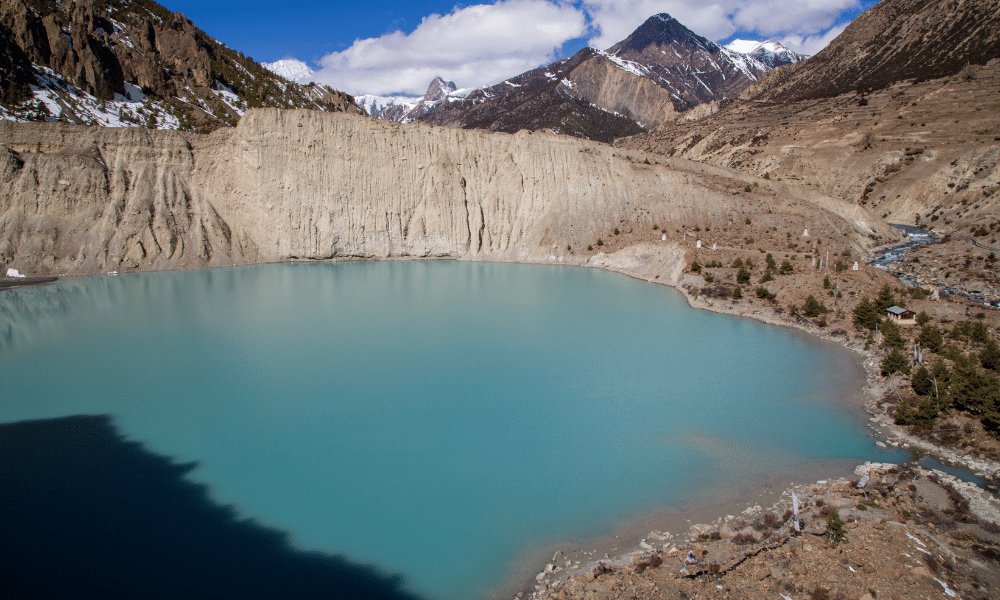
Milarepa Cave:
Milarepa Cave, situated near the village of Bhraka, is a significant pilgrimage site for Buddhists. The cave is said to have been the meditation spot of the revered Tibetan yogi and poet Milarepa. The site offers not only historical and spiritual significance but also beautiful views of the Annapurna range and the Marsyangdi River Valley.
Bhraka Gompa:
Bhraka Gompa, also known as Braga Monastery, is an ancient Buddhist monastery located in the village of Bhraka. The monastery is over 500 years old and houses a beautiful collection of Buddhist statues, murals, and artifacts. The gompa is perched on a hillside, offering stunning views of the surrounding landscape and villages. Visiting Bhraka Gompa provides insight into the region's spiritual heritage and allows visitors to appreciate the local architecture and religious practices.
Ice Lake:
Ice Lake, or Kicho Tal, is another beautiful glacial lake situated at an altitude of 4,600 meters (15,091 feet) in the Manang region. A day hike from the village of Bhraka or Manang will take you to this remote lake, offering breathtaking views of the Annapurna range and the opportunity to spot diverse flora and fauna along the way.
Praken Gompa:
Praken Gompa is a small monastery perched on a hill above the village of Manang. The gompa is home to a revered statue of the Buddhist deity Avalokiteshvara, said to have been consecrated by the Dalai Lama. Visitors can hike to the monastery and receive blessings from the resident lama while enjoying panoramic views of the valley below.
These major attractions in Manang provide visitors with a diverse range of experiences, combining natural beauty, historical significance, and cultural insights into the unique heritage of the region.
The local villages in the Manang region hold a unique charm and allure, offering visitors the opportunity to experience authentic Nepalese culture and traditions amid the stunning landscapes of the Annapurna mountain range. Some of the most notable local villages include Pisang, Ngawal, and Manang village:
Pisang:
Pisang is a picturesque village located along the Annapurna Circuit, nestled between the majestic Pisang Peak and Annapurna II. The village is divided into two parts: Lower Pisang and Upper Pisang. Lower Pisang is a bustling hub, while Upper Pisang is a more traditional settlement with ancient stone houses, narrow alleyways, and beautiful gardens. A visit to Pisang allows travelers to witness local life, explore the beautiful landscape, and visit the centuries-old Pisang Monastery.
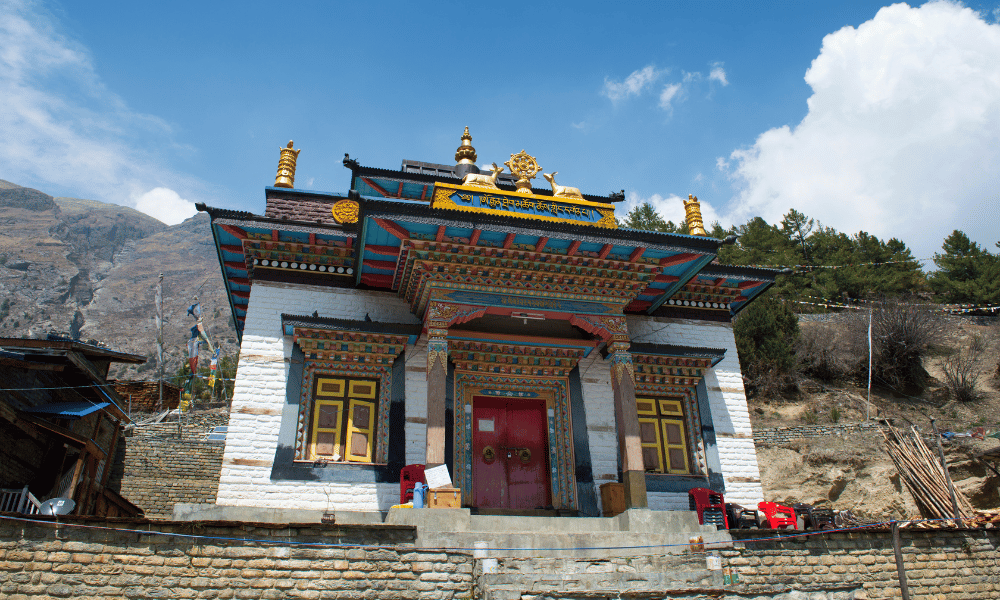
Ngawal:
Ngawal is a traditional village located off the main Annapurna Circuit trail, known for its well-preserved ancient architecture and cultural heritage. The village is an excellent example of the Tibetan-influenced Manangi culture, with stone houses, flat roofs, and intricately carved wooden windows. The village also boasts a centuries-old Buddhist monastery and offers panoramic views of the Annapurna range, including the magnificent peaks of Annapurna III, Gangapurna, and Tilicho. Ngawal is a great place for travelers seeking a more remote and authentic cultural experience in the Manang region.
Manang Village:
Manang Village, also known as the gateway to the Annapurna Circuit's high-altitude section, is a vibrant and bustling hub that has embraced modern amenities while still retaining its traditional charm. The village is surrounded by the majestic Annapurna range and offers stunning views of the Gangapurna glacier and lake. In Manang, visitors can explore the narrow alleyways lined with traditional stone houses, visit local monasteries, and even catch a movie at the local movie hall. The village also serves as a base for various treks and day hikes, such as the hike to the Ice Lake or Milarepa Cave.
Exploring these local villages in the Manang region offers a glimpse into the authentic and traditional way of life in the Himalayas, allowing travelers to immerse themselves in the region's unique culture, history, and natural beauty.
The Manang region offers a range of accommodation options to suit different preferences and budgets. Visitors can choose from traditional teahouses, guesthouses, and luxury lodges for a comfortable stay amid the breathtaking Himalayan landscapes.
Teahouses:
Teahouses are the most common form of accommodation along the trekking routes in the Manang region. These family-run establishments provide basic lodging and home-cooked meals for trekkers and travelers. Teahouses offer an authentic and communal experience, allowing guests to socialize with fellow trekkers and locals while enjoying the warm hospitality of the hosts. Rooms in teahouses are typically modest and may include shared bathrooms and basic amenities.
Guesthouses:
Guesthouses in the Manang region offer a step up in comfort compared to teahouses, featuring private rooms with attached bathrooms and additional amenities such as hot showers and Wi-Fi. Guesthouses can be found in larger villages like Manang, Pisang, and Chame, providing travelers with a more comfortable stay during their visit to the region. Some guest houses also have restaurants and cafes on-site, offering a wider variety of meal options.
Luxury Lodges:
For those seeking a more luxurious experience, there are a few upscale lodges in the Manang region that cater to discerning travelers. These luxury lodges offer well-appointed rooms, en-suite bathrooms, and a range of amenities such as heating, hot showers, and Wi-Fi. Additionally, luxury lodges typically feature on-site restaurants, bars, and lounges, where guests can enjoy gourmet meals and unwind after a long day of trekking or exploring. Some luxury lodges also offer spa facilities and other services to ensure a comfortable and indulgent stay.
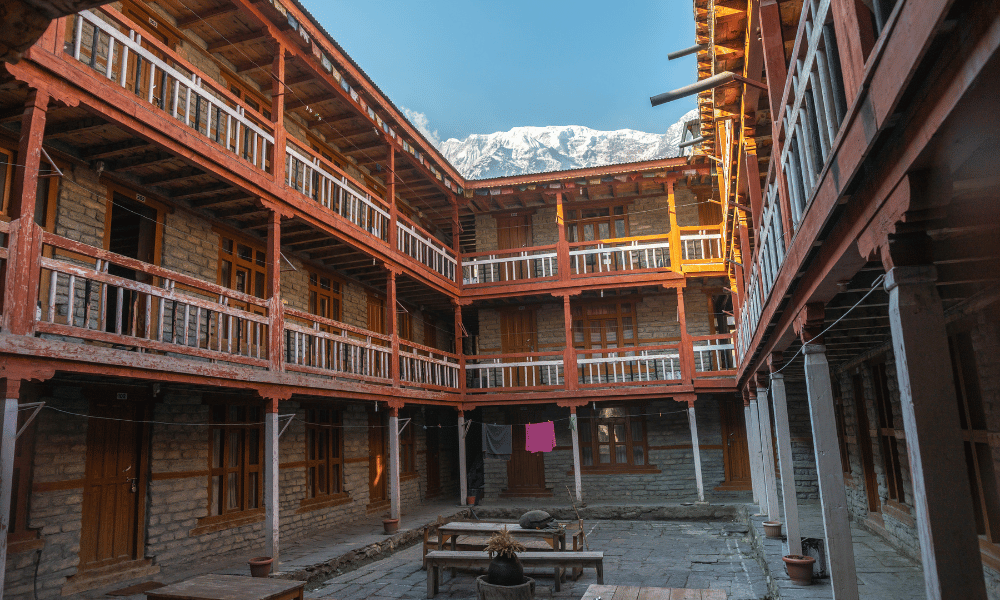
While luxury lodges in the Manang region are limited and may not be as abundant as in other popular trekking areas such as the Everest region, it is still possible to find upscale accommodations that combine comfort, hospitality, and stunning views of the Himalayas.
When choosing accommodations in the Manang region, it is essential to consider your preferences, budget, and the level of comfort you desire during your stay. Regardless of your choice, the warmth and hospitality of the local people are sure to make your experience in Manang unforgettable.
Responsible tourism and sustainable practices are vital when visiting the Manang region to minimize the impact on its fragile environment and rich cultural heritage. Supporting local communities by hiring guides, choosing locally-owned accommodations, and patronizing local businesses helps ensure that tourism revenue benefits the people who call the region home. Conservation efforts, such as the Annapurna Conservation Area Project (ACAP), play a crucial role in protecting the area's natural and cultural resources. Travelers should adopt eco-friendly practices, like practicing Leave No Trace principles, conserving water and energy, and being mindful of wildlife and local customs. By embracing responsible tourism, visitors contribute to the preservation and sustainable development of the Manang region for future generations.
The Annapurna Conservation Area Project (ACAP) plays a crucial role in protecting and preserving the unique ecological, cultural, and natural resources of the Manang region. Established in 1986 as the first Conservation Area in Nepal, ACAP covers a vast expanse of the Annapurna mountain range, encompassing diverse ecosystems, wildlife, and human settlements.
ACAP has been instrumental in implementing various sustainable practices and initiatives in the region to ensure responsible tourism, community development, and environmental conservation. Some of the key activities undertaken by ACAP include:
Biodiversity Conservation:
ACAP works to protect the region's rich biodiversity by promoting sustainable natural resource management and implementing programs to conserve endangered flora and fauna. They also focus on habitat restoration, wildlife monitoring, and the prevention of poaching and illegal wildlife trade.
Community Development:
ACAP supports local communities by providing resources and training to help them achieve sustainable livelihoods. This includes promoting eco-friendly income-generating activities, such as agriculture, livestock management, and small-scale enterprises, as well as supporting the development of health, education, and sanitation facilities.
Sustainable Tourism:
ACAP promotes responsible and sustainable tourism practices in the region by implementing visitor management strategies, setting up waste management systems, and providing training and resources to local communities to develop sustainable tourism services. They also work to preserve and promote the cultural heritage of the region through the restoration and conservation of historical and religious sites.
Environmental Education and Awareness:
ACAP engages in various environmental education and awareness programs for local communities, schools, and visitors to promote conservation ethics and encourage sustainable practices. This includes workshops, seminars, and training programs on topics such as waste management, climate change, and biodiversity conservation.
By supporting and participating in the initiatives led by ACAP, tourists visiting the Manang region can contribute to responsible tourism practices and help protect the area's fragile ecosystems and unique cultural heritage. As a visitor, it's essential to respect local customs, minimize your environmental impact, and support local businesses to ensure a sustainable future for the Manang region and its people.
As a traveler visiting the Manang region, it's important to be mindful of your impact on the environment and local culture. Here are some eco-friendly travel tips to help you minimize your footprint and contribute to responsible tourism:
Pack light and choose eco-friendly gear:
Travel with lightweight and reusable items, such as water bottles, bags, and utensils, to minimize waste. Opt for eco-friendly gear made from sustainable materials and avoid single-use plastic products.
Respect local customs and traditions:
Learn about the local culture and customs before your visit and follow the guidelines to show respect for the communities you interact with. Dress modestly, avoid taking photos without permission, and be sensitive to local beliefs and practices.
Support local businesses:
Choose locally-owned accommodations, restaurants, and shops to support the community's economy. Hire local guides and porters, ensuring they receive fair wages and working conditions.
Practice Leave No Trace principles:
Dispose of waste properly by using designated waste disposal facilities or carrying it out with you. Do not litter, and avoid using non-biodegradable products. Use designated trails to minimize soil erosion and damage to vegetation.
Conserve water and energy:
Use water and electricity sparingly in your accommodations, as resources can be scarce in the region. Turn off lights and electronic devices when not in use, and avoid long showers or using excessive amounts of water.
Be mindful of wildlife and flora:
Maintain a safe distance from wildlife and avoid feeding or disturbing animals. Do not pick plants or flowers, and refrain from collecting any natural or cultural artifacts.
Minimize carbon footprint:
Consider using eco-friendly transportation options, such as walking or biking, whenever possible. If you must use motorized transport, try to share rides or use public transportation to reduce your carbon emissions.
Educate yourself and others:
Learn about the environmental and cultural issues facing the region, and share your knowledge with fellow travelers. Encourage responsible tourism practices and participate in conservation efforts, such as tree planting or clean-up activities.
By following these eco-friendly travel tips, you can help preserve the natural beauty and cultural heritage of the Manang region, ensuring future generations can enjoy the unique experiences it offers.
Supporting local communities is a critical aspect of responsible tourism, as it not only contributes to the local economy but also provides a more authentic experience for visitors. When traveling in the Manang region, consider engaging with the local community in the following ways:
Hire local guides and porters:
Local guides possess valuable knowledge of the area's culture, history, and environment. By hiring local guides and porters, you're supporting their livelihoods and ensuring that tourism revenue remains within the community. Additionally, local guides can provide unique insights, stories, and cultural experiences that enhance your overall travel experience.
Stay in locally-owned accommodations:
Choose to stay in locally-owned and operated guesthouses, teahouses, or lodges instead of international hotel chains. This not only helps support local families but also provides you with the opportunity to experience traditional Nepalese hospitality and culture firsthand.
Eat at local restaurants and cafes:
Support local eateries by dining at family-run restaurants and cafes, which often serve delicious, authentic Nepalese cuisine. This enables you to experience local flavors and culinary traditions while contributing to the community's economic development.
Shop from local artisans and vendors:
Purchase souvenirs and handicrafts directly from local artisans, cooperatives, and small-scale vendors. This supports traditional craftsmanship and helps preserve cultural heritage. Be sure to avoid purchasing items made from endangered species or materials that may have been sourced unsustainably.
Participate in community-based tourism initiatives:
Engage in community-based tourism projects, such as homestays or village tours, which empower local communities by providing them with opportunities to showcase their culture, traditions, and way of life. These experiences offer unique insights into the lives of the local people and foster cross-cultural understanding.
Contribute to local development projects:
If you have the opportunity, consider donating to or volunteering with local NGOs, schools, or health centers, which work to improve the well-being of the community. Your support can make a lasting difference in the lives of the people living in the region.
By supporting local communities and businesses during your visit to the Manang region, you contribute to the sustainable development of the area, ensuring that tourism benefits the people who call it home. Furthermore, engaging with local communities enriches your travel experience, allowing you to forge meaningful connections and gain a deeper understanding of the unique culture and way of life in the region.
In conclusion, the Manang region in Nepal is a hidden gem, offering a unique blend of breathtaking natural beauty, rich cultural heritage, and thrilling adventure opportunities. Nestled within the majestic Annapurna mountain range, Manang's diverse landscapes range from lush forests and alpine meadows to rugged mountain terrain and tranquil glacial lakes. This pristine region is home to an incredible array of flora and fauna, making it a haven for nature lovers and wildlife enthusiasts alike.
The Manang region's cultural richness is equally captivating, with the local Manangi people maintaining a unique way of life deeply rooted in age-old traditions and customs. Visitors have the opportunity to immerse themselves in the region's vibrant culture by exploring local villages, participating in traditional festivals, and sampling delicious local cuisine.
Adventure-seekers will find no shortage of thrilling activities, from trekking along the famous Annapurna Circuit and exploring Tilicho Lake to climbing challenging peaks like Pisang Peak and Chulu East. Whether you're a seasoned mountaineer or simply seeking a serene escape, Manang offers unforgettable experiences for every type of traveler.
By choosing to visit Manang, you have the chance to discover a lesser-known corner of Nepal, where the allure of pristine wilderness and authentic cultural experiences remain unspoiled by mass tourism. We encourage you to explore this hidden treasure and fully immerse yourself in the awe-inspiring landscapes and rich cultural heritage that make Manang a truly unforgettable destination. Remember to travel responsibly, support local communities, and embrace sustainable practices to ensure the preservation of this extraordinary region for generations to come.
Manang is typically accessed via a trek or drive from Besisahar. Travelers often visit Manang as part of the Annapurna Circuit trek or while exploring other trekking routes in the region.
The best time to visit Manang is during the pre-monsoon season (March to May) and the post-monsoon season (September to November). During these periods, the weather is more stable, with clear skies, moderate temperatures, and minimal precipitation, making it ideal for trekking and outdoor activities.
Yes, you'll need two permits to visit Manang: the Annapurna Conservation Area Permit (ACAP) and the Trekkers' Information Management System (TIMS) card. Both permits can be obtained in Kathmandu or Pokhara before starting your trek.
The difficulty of treks in Manang varies depending on the route, duration, and altitude. The Annapurna Circuit, for example, is considered moderately challenging due to its length and high-altitude sections. It's essential to be physically fit, acclimatize properly, and be prepared for varying weather conditions.
Accommodations in Manang range from basic teahouses and guesthouses to a few luxury lodges. Teahouses are the most common option, offering simple rooms, shared bathrooms, and home-cooked meals.
It is not recommended to drink tap water in Manang. Instead, use water purification tablets, a water filter, or purchase bottled water. Always opt for reusable bottles to minimize plastic waste.
Credit card acceptance is limited in Manang, and it's best to carry sufficient Nepalese Rupees (NPR) for your expenses. There are no ATMs in the area, so ensure you have enough cash before starting your trek.
The primary health risk in Manang is altitude sickness. It's essential to acclimatize properly and know the symptoms of altitude sickness. Additionally, ensure you have a well-stocked first aid kit and take necessary precautions regarding food and water hygiene.
Internet access is available in some teahouses, guesthouses, and lodges in Manang, though the connection may be slow and unreliable. It's best to be prepared for limited connectivity during your visit.
Yes, it's highly recommended to have travel insurance when visiting Manang. Ensure your policy covers high-altitude trekking, medical emergencies, evacuation, and other potential risks associated with your trip.